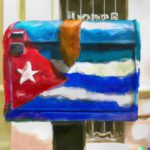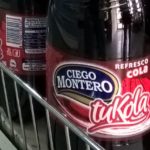Letztes Update: 11. September 2023
On the Cuban Trails of Hemingway
Hemingway loved Cuba and its rum as much as Cuba loved Hemingway and stayed true to him. They say Hemingway’s granddaughter Mariel said during a trip to Havana some years ago: “Cuba has three icons – Fidel, Che, and my grandfather.” And that is undoubtedly true. In Havana, Hemingway is omnipresent in various forms – mostly in liquid form, of course. But when Hemingway proclaims where to find the best daiquiris and mojitos, nothing else can be done but to attract masses of followers and tourists decades later who walk in his footsteps.
Cuba – Ernest Hemingway’s Great Love
Besides the Argentinian Ernesto Che Guevara, there is hardly any other foreigner as connected to Cuba as the American writer and journalist Ernest Hemingway. The island nation was his great love. In one of his letters he called it “my homeland Cuba.” Here he spent nearly half his life and created some of his best works that made him famous worldwide. Cuba returned this feeling in equal measure: respect and recognition for his talent, and the places where he lived and caroused in bohemian style are among the sights that arouse the greatest interest among visitors to Cuba.
Hemingway first came to Cuba in 1928 aboard the Orita. On the way to Key West, the eccentric bohemian enclave in the southernmost part of the United States where he scratched out his fishing village, the writer stopped in Havana, and this remarkable city captured his heart forever. Until 1930 he toured the bars along Calle Obispo and from 1932 to 1939 he lived in room 511 of the Hotel Ambos Mundos in Havana. Today, tourists stream into the hotel every day to experience the writer’s world. The old elevator with the unchanging piccolo inside takes visitors up to the 5th floor. Hemingway’s room is simple: a bed, a table with a typewriter, a bookcase, photos on the walls of him receiving the Nobel Prize for Literature, snapshots of his big game fishing, where you can see his record catch – a huge swordfish, perhaps twice as big as he was himself (and Hemingway was a big man, 6’1″!). On the wall next to his bed hangs a photo of him with Fidel Castro – the two men were bound in warm friendship – although others say Hemingway did not think highly of Fidel Castro. At least they shared a passion for fishing.
Finca Vigía – The House Where Hemingway Lived for 20 Years
After the writer had lived for seven years at the Hotel Ambos Mundos in Havana, he bought a house 10 kilometers from Havana – as it goes: his wife (the third), Martha Gellhorn, did not want to live in the small hotel room. The house was called Finca Vigía and was located in the small working town of San Francisco de Paula. It was built in 1886 by the Catalan architect Miguel Pascual y Baguer. The Cubans have always respected that Hemingway chose to live in an ordinary place, near the people with whom he went fishing.
For $18,000 the writer acquired a beautiful property in a wonderful exotic park with bamboo trees, magnolias, royal palms, and more. Next to Hemingway’s Finca there was a garage for his seven cars and a guest house where he met with his friends and partied until dawn. It is known that the writer was very fond of alcohol, which later led to his downfall. But in those years – the 1940s and 1950s – it did not matter what was dangerous for his health and what was not! Among Hemingway’s guests were celebrities of every caliber: military, artists, writers, politicians. The list included many famous names like Gary Cooper, Ingrid Bergman, Errol Flynn, Marlene Dietrich, Orson Welles, Spencer Tracy, and others… A bell at the entrance to the house heralded the arrival of the party guests.
A Picasso at Finca Vigía

Finca Vigía – A House That Tells the Story of an Era
Finca Vigía itself, which was converted into a museum, can only be seen from the outside – through the entrance and windows, but practically everything is visible: the large living room, the bedrooms, the utility rooms. The Cuban state took care to preserve the authentic interior of the manor house as much as possible. According to the British newspaper The Sunday Times, after Fidel Castro stepped down from power, the government provided 2.5 million pounds several years ago for the restoration of Finca Vigía. Hemingway lived in this villa with his last wife, Mary Welsh, a correspondent for Time Magazine, whom he had met in London in 1944. He left Finca Vigía in 1960, when he returned to America tired and depressed. Although rarely, the Cuban authorities open the house museum for visits inside. Among Hemingway’s personal items at Finca Vigía are the original props for the film adaptation of his novel The Old Man and the Sea, a Spanish translation of the same book in the Cuban magazine Bohemia, and an old copy of Life magazine with an article about the author.
Fun Fact: The Location of the Finca
Although the Finca is located almost 12 kilometers from the coast, the view from the 80 meter high slope – and additionally from the tower – was so good that Hemingway could see from there whether the waves were too high for fishing, so he could save himself the trip to the coast.
Want to know more about Hemingway? Then take a look at our Hemingway tour through Havana here!
This article was translated with the help of AI.
















